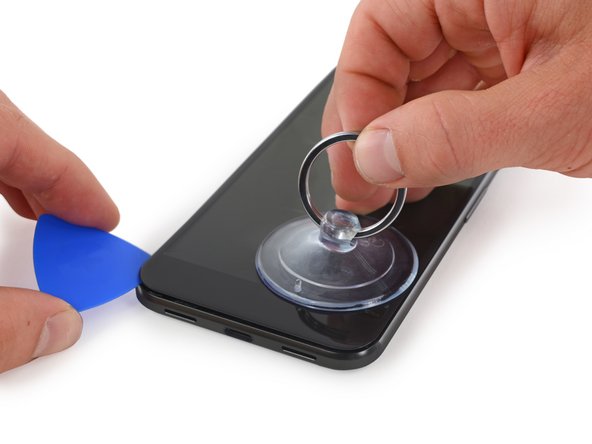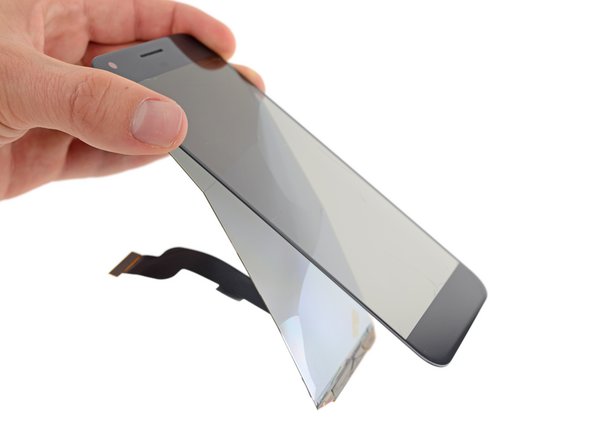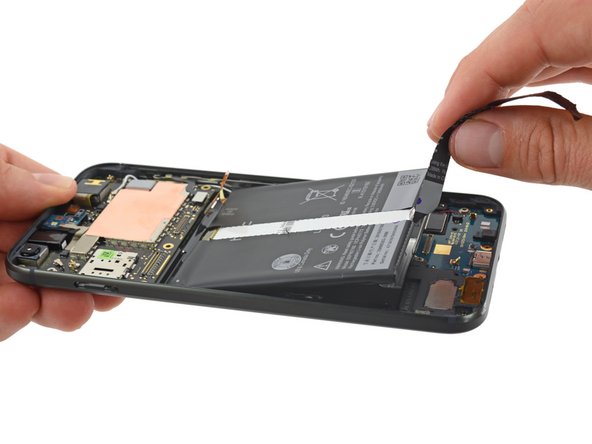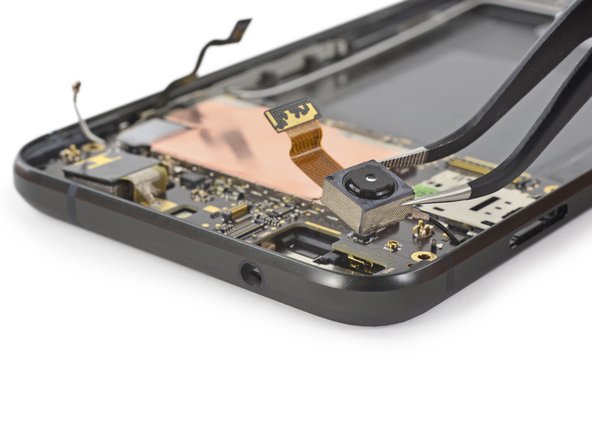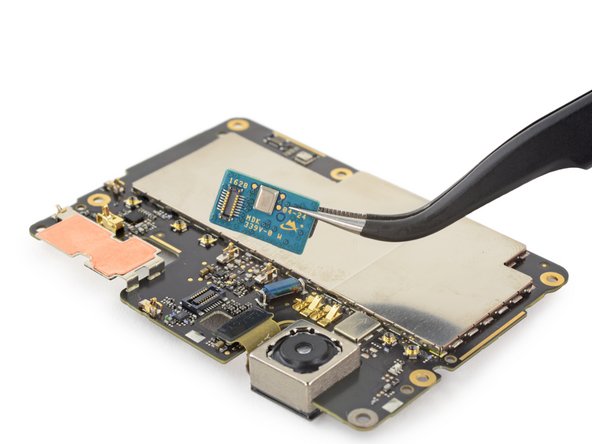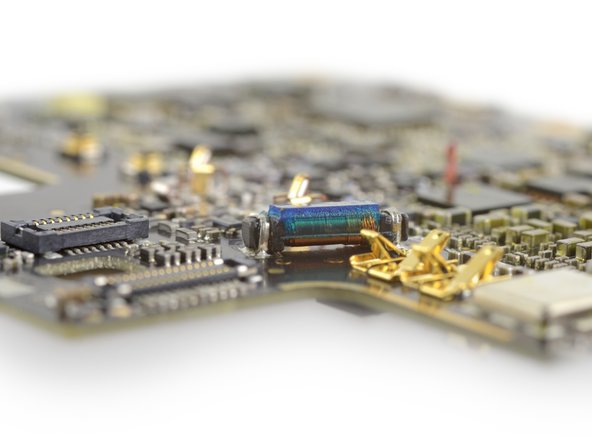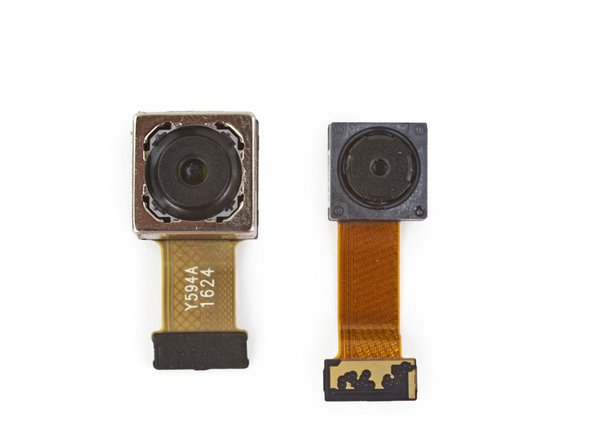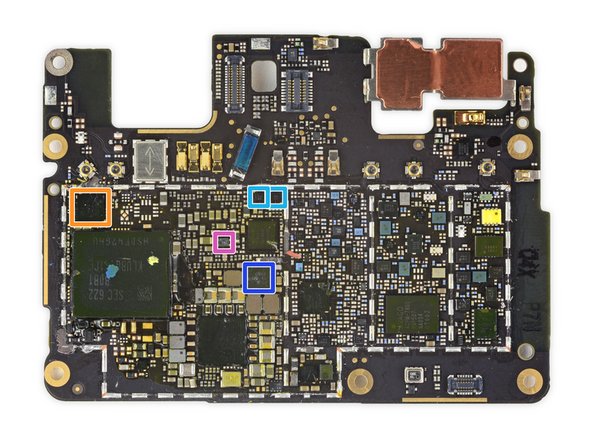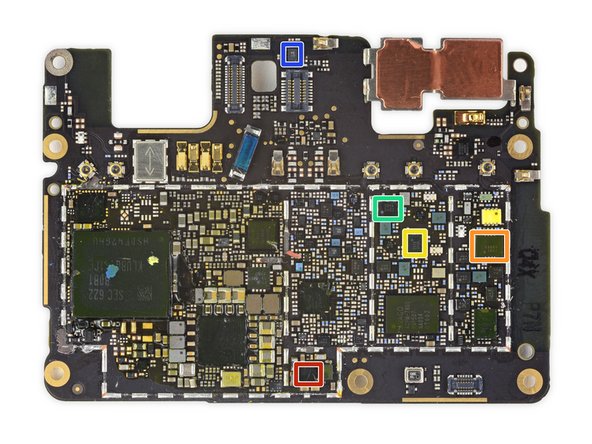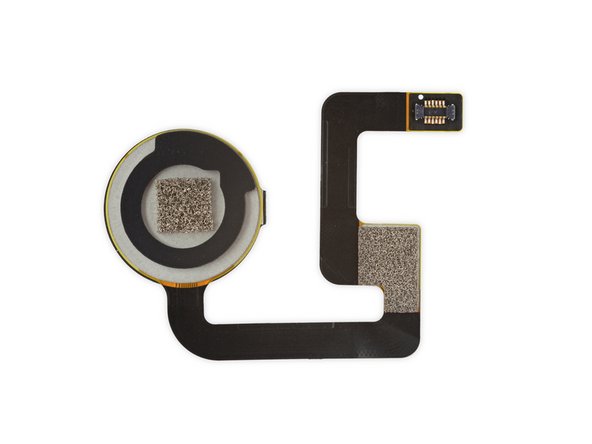Google Pixel XL Teardown
Duration: 45 minutes
Steps: 19 Steps
Today, we're diving into our first-ever teardown of a phone crafted from the ground up: the Pixel XL. What’s in store? Well, at first glance, it might remind you a bit of an iPhone, but we're all about the guts! So, hold onto your Nougat, because we’re about to get hands-on and take this smartphone apart. For all the latest updates from the repair scene, be sure to follow us on Facebook, Instagram, or Twitter!
Step 1
- Reviews for these Pixel phones are in, and guess what? They're looking great! Check out these impressive specs:
- 5.5" AMOLED display boasting a stunning QHD 1440 x 2560 resolution (534 ppi) with durable 2.5D Gorilla Glass 4
- Featuring a powerful quad-core, 64-bit Qualcomm Snapdragon 821 processor (2.15 GHz + 1.6 GHz) coupled with 4GB LPDDR4 RAM
- Snap amazing photos with the 12.3-megapixel, f/2.0 main camera equipped with phase detection autofocus and laser detection autofocus, plus an 8 MP selfie camera for those perfect selfies!
- Choose between 32 GB or 128 GB of built-in storage to fit all your needs
- Enjoy the convenience of a Pixel Imprint back-mounted fingerprint sensor for quick unlocks
- Connect effortlessly with a USB Type-C port and a classic 3.5 mm headphone jack
- Running on Android 7.1 Nougat, you're all set with the latest features!
Step 2
- This device may claim to be all about precision and performance, but it seems to have taken a few cues from the fruity side of things.
- While it shares some styling traits, the Pixel XL boasts unique features that distinguish it from its rosy rival:
- And guess what? It still rocks that headphone jack proudly located at the top of the phone!
- Say goodbye to the home button—this device has embraced on-screen buttons for a sleek, button-free front face.
- You'll find a back-mounted fingerprint scanner, paired with a single rear-facing camera that keeps things nice and tidy without any unsightly bumps.
- Plus, it sports two stylish speaker slits instead of those bulky grilles, and a USB-C port, leaving behind the proprietary Lightning port.
Step 3
- This phone has a familiar look, so we're feeling pretty confident. Let's grab our iOpener, warm it up, and pick our opening tool.
- After heating it for a minute and gently prying it open, we lift the phone from the top, eager to see what’s inside.
- However, a bracket securing the display cable stops us in our tracks. Time to grab the driver and dive a little deeper.
Tools Used
Step 4
The display crafted by Samsung comes with the part number AMS546KD09.
- Let's make this happen: detach the bracket, liberate the display, and claim victory! Those T5 Torx screws don’t stand a chance with the handy tools from the 64 Bit Driver Kit.
- Think of us as your repair superheroes—breaking things so you don’t have to! Every teardown is a chance to dive deep into how a device is built, helping us create guides that let you tackle repairs with confidence and ease.
- In this instance, the OLED panel decided to part ways with the digitizer glass a bit too smoothly for our taste. With ultra-slim components and no frame or bezel backing the display, it gets a bit dicey during removal. But don't worry, we’re on the lookout for a smoother method next time!
- And tucked away behind the display panel is the Synaptics ClearPad S3708 touch controller, ready for action.
Step 5
When we talk about 'rigid,' we mean it shouldn't be all wiggly. Well, surprise! It's a little more flexible than we thought. No worries, it’ll straighten out just fine.
The daughterboard? It's rocking a classic blue-green look; it’s got no family ties to the others.
- This sleek and sturdy midframe is probably crafted from magnesium and is secured tightly to the phone's body.
- On the left side, this midframe is home to a quirky ribbon connector and the earpiece speaker.
- To the right, you'll find the rest of the phone, complete with a motherboard that boasts a stylish matte black finish.
Step 6
Just a fun fact: the infamous Samsung Galaxy Note7, before going out with a bang, was equipped with a 13.48 Wh battery!
- When it comes to the 'pull to remove' battery tab, think of it as a clever little perforation in the sleeve. Just peel it away, and voilà, you've got a nifty pull tab ready to go!
- This HTC-made battery is held down by two strips of sturdy adhesive. But don't worry, that pull tab is going to do the trick without needing any heat. Plus, it might even serve as a tamper-evident seal. How cool is that?
- With a capacity of 13.28 Wh, this battery outshines the 11.1 Wh iPhone 7 Plus, though it still falls a bit short compared to the Galaxy S7 Edge's 13.86 Wh powerhouse. But hey, every battery has its strengths!
Step 7
Modularity is the way to go! These small components can be swapped out individually, making replacement parts a breeze - and your wallet will thank you.
- Let's dive into the delightful world of Pixel parts!
- First up, we have a quirky combo: the laser autofocus and microphone board. Quite the duo!
- Next, let's liberate the 3.5 mm headphone jack. (A little farewell to those Lightning headphones!)
- And last but not least, we're removing the 8-megapixel front-facing (selfie) camera. Smile for the camera!
Step 8
These little components can be a bit tricky! In many other devices, you'll often find them cozying up together on the main board. When there's more modularity, it translates to more wallet-friendly and hassle-free repairs—if one part goes kaput, there's no need to swap out the whole motherboard or dive into a tricky microsoldering escapade.
- Let's take a peek at this motherboard, but hold on—there’s a sneaky little fingerprint sensor cable trying to trip us up! Luckily, disarming it is a breeze.
- Up next is a mini board housing the microphone and the rangefinder that works its magic with the XL's laser autofocus.
- Teardown Update: That blue 'mystery' component hanging out next to the main camera? It’s probably a passive inductor, given its two solder pads and that nifty copper wire coil.
Step 9
- Alright, it's time to say goodbye to that impressive rear-facing camera! With its 12.3 megapixels, it certainly holds its own—though it might not have that snazzy optical image stabilization we've seen in this season's iPhones.
- Check out the rear- and front-facing cameras side by side for a quick size comparison!
- Take a closer look at the sensor and optics of the main camera!
- And here's a fun peek at the primary camera with some X-ray vision magic! (Thanks to Creative Electron for the inspiration!)
Step 10
- Let's dive into the heart of your device! Here are the chips you'll find on the front of the motherboard:
- First up, we've got the Samsung K3RG2G20BM-MGCJ, a snazzy 4 GB LPDDR4 mobile DRAM, working alongside a quad-core Qualcomm Snapdragon 821 processor. With two cores strutting their stuff at 2.15 GHz and the other two at 1.6 GHz, this duo knows how to keep things running smoothly!
- Next in line is the Qualcomm PMI8996, our power management champion, paired with the Qualcomm SMB1350. They make sure your device charges quickly with that Quick Charge 3.0 magic!
- Now, let’s not forget the NXP Semiconductor TFA9891, your go-to for smart audio amplification! It’s all about making your sound experience top-notch.
- And of course, the Qualcomm WTR4905 LTE RF transceiver is here, ensuring you stay connected no matter where you are.
- Spotted a chip that looks like Wi-Fi? That’s our 3207RA G707A, bringing you wireless goodness!
- You might also see the NXP 55102 1807 S0622 – a nifty NFC controller that’s ready for your near field communication needs.
- Last but not least, we have the Bosch Sensortec BMI160, a low-power IMU that keeps your device aware of its surroundings!
Step 11
- Let's take a peek at the back, shall we?
- We've got the Samsung KLUBG4G1CE-B0B1, a snazzy 32 GB Universal Flash Storage (UFS) 2.0.
- Next up is the Qualcomm PM8996 Power Management IC, keeping everything powered up.
- Don't forget the Avago ACPM-7800 power amplifier, delivering that sweet audio boost.
- We've got the Qualcomm WTR3925 LTE RF transceiver, paired with the Qualcomm RF360 Dynamic Antenna Matching Tuner (QFE2550) for top-notch connectivity.
- The Qualcomm WCD9335 audio codec is here to make your sound crisp and clear.
- Say hello to the Skyworks SKY77807 Quad-Band Power Amplifier Module (PAM), enhancing your signal.
- And last but not least, the Bosch Sensortec BMP280 series barometric pressure sensor, giving you accurate weather data right on your device!
Step 12
- Get ready for some IC identification fun, part 2!
- Meet the AKM Semiconductor AK09915C, your trusty 3-axis electronic compass.
- Next up, we've got the STMicroelectronics STM32F412RG, a powerful 32-bit ARM Cortex-M4 with a cool 1 Mb flash (probably).
- Say hello to the Texas Instruments TPA2011D1, a 3.2 W mono class-D audio amplifier that packs a punch.
- Don't forget about the ON Semiconductor FSA3000L10X, a nifty two-port USB-2.0 MHL DPDT switch.
- Check out the Maxim Integrated MAX14589E, your go-to DPDT analog switch.
- Now, let's give a shoutout to the Texas Instruments TPS65633B, handling AMOLED display power management like a pro.
- Finally, meet the ABLIC, Inc. (formerly Seiko Instruments) S-1000C17-I4T1U, a reliable 1.7 V voltage detector.
Step 13
- Time to identify those ICs, part three!
- First up, we've got the ON Semiconductor FPF2281BUCX-F130 to keep your device safe from over-voltage mishaps.
- Next, say hello to the Texas Instruments TPS61240, your trusty 450 mA boost converter.
- Then, we've got the Texas Instruments TLV707285P, delivering 200 mA of power as a reliable LDO regulator.
- Don't forget the Ricoh RP115L171B5, a solid 500 mA LDO regulator – it's got your back.
- And last but not least, the ON Semiconductor NCP134AMX110TCG, another 500 mA LDO regulator ready to lend a hand.
Step 14
- Let's dive into the fun part of IC Identification, part 4:
- You’ll be on the lookout for the Qualcomm QFE3100 envelope tracker - it’s a key player in this show!
- Next up is the Sony CXM3642K SP12T + SP9T antenna switch module. It’s like the traffic cop for signals!
- Don’t forget the Qorvo TQQ1013 band 13 SAW duplexer, working hard to keep those frequencies in line.
- Also, keep your eyes peeled for the Qorvo TQM963014 BC14/BC1/B25 BAW duplexer - it’s a multitasker!
- You might spot the Sony CXA4416 SP6T antenna switch (likely) - it’s got a good chance of making an appearance.
- And lastly, an antenna tuner (likely) might just be hanging out around here too!
Step 15
- The daughterboard easily pops out of the rear case, granting us access to the USB Type-C port and the microphone. How convenient!
- This part is pretty straightforward, which translates to wallet-friendly USB port replacements. Historically, USB ports have been known to fail, but hey, USB Type-C might just be a tougher cookie in that department!
- We stumbled upon a few silicon goodies on the daughterboard:
- But, let's be real, USB-C has had its share of quirks.
- Qualcomm QFE2550 dynamic antenna matching tuner.
- AKM Semiconductor AK8789 Hall-effect sensor.
- NXP Semiconductor PTN36241G USB 3.0 redriver.
- ON Semiconductor FUSB340 USB 3.1 SuperSpeed 10 Gbps switch.
Step 16
Now that we have almost everything out of the case, it's pretty impressive how little we've found that screams HTC manufacturing. It's like a mystery waiting to be solved!
- Let's get started by gently prying the Pixel Imprint fingerprint sensor out of its cozy spot in the rear case.
- Taking a closer look, you'll notice it has a unique design, similar to those found in other smartphones.
- Interestingly, despite being a major player in the smartphone game, the only noticeable contribution from the manufacturer is the battery. If you're not feeling confident, remember that you can always schedule a repair with the experts at Salvation Repair.
Step 17
- Still attached to the Pixel XL's frame is the oscillating linear vibration motor, and that's exactly where we want it! A little peek with X-ray vision reveals it doing its thing.
- Check out this cool video where we put the Pixel's motor up against the latest Taptic Engine from the iPhone 7 Plus. It's a fun comparison!
Step 18
Heads up: We had some X-Ray images in our toolkit to help light our path, and surprise, surprise, we found just what we were looking for: a tiny bit of weight nestled among the wee springs.
- Teardown Update: You asked, and we delivered—check out this up-close (and way less shaky) look at that buzzing motor.
- Honestly, that plain shiny metal box on the vibrator didn’t wow us, so we decided to give the casing a little makeover with a rotary tool, all in the name of science!
- The fancy term for this little marvel is the linear oscillator, which is just a weighted magnetic core doing its dance between two springy metals. The way it vibrates gives you that tactile feedback, creating a virtual click without needing any moving parts!
Step 19
- Here's a high-res snapshot of some top-notch Pixel parts, just for you!








